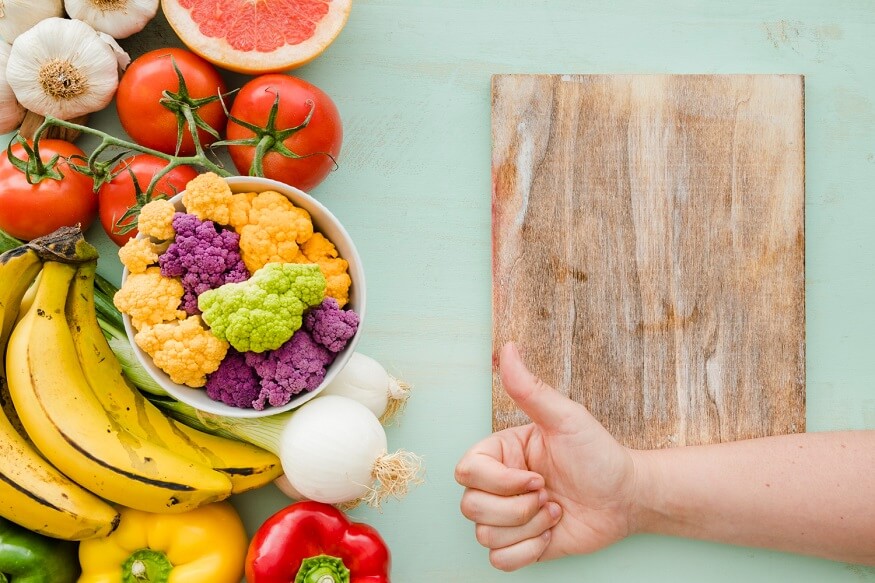In today’s busy world, ensuring children eat right has become a priority. At each stage of their life, a child has different nutritional needs. Parents must ensure that children get the right nutrition as per their needs.
One way to achieve comprehensive nutrition is by incorporating the rainbow diet. The rainbow diet emphasises incorporating different colours of fruits and vegetables into our daily meals. This blog discusses the importance of incorporating a rainbow diet for comprehensive nutrition.
Also Read: Protein-Rich foods for good health of children
Importance of fruits and vegetables
Fruits and vegetables have high nutritional value along with high fibre content. They have important vitamins and minerals like A, C, K, potassium, and folic acid. Hence, their presence in daily meals is not just a dietary goal, but also a necessity.
The Rainbow Diet Approach
The rainbow diet emphasizes consuming various colours of fruits and vegetables, ensuring a diverse nutrient intake. Each colour group represents different nutrients and health benefits.
Following is an overview of the health benefits of different-coloured foods in a rainbow diet:
1) Red and Pink foods
The red and pink foods get their colour from pigments called anthocyanins. Red and pink foods are anti-inflammatory and antioxidants and protect the skin from the sun.
You can include the following foods to add red to the diet:
- Amaranth
- Apples
- Beetroot
- Cherries
- Cranberries
- Buckwheat
- Raspberries
- Pomegranates
- Strawberries
- Watermelons
- Pink grapefruits
- Tomatoes
2) Yellow and Orange
The yellow and orange foods get their colour from the carotenoid pigments. They make eyes stronger and reduce the chances of getting heart problems and cancer. Citrus fruits help boost immunity.
You can include the following foods to add yellow and orange to the diet:
- Almonds
- Bananas
- Cantaloupe
- Carrots
- Cashews
- Chickpeas
- Corn
- Grapefruit
- Lemons
- Mangoes
- Millet
- Oranges
- Orange and yellow peppers
- Papayas
- Peaches
- Pineapple
- Tangerine
- Pumpkin
- Sweet potato
- Corn
- Pineapple
Also Read: Boost Your Child’s Immune System with Healthy Smoothie Recipes
3) Green
The green pigment in plants is called chlorophyll and functions as an antioxidant and an anti-inflammatory. It helps in blood cell production and helps lower the risk of cataracts.
You can include the following foods to add green to the diet:
- Asparagus
- Arugula
- Avocados
- Bok choy
- Broccoli
- Brussels sprouts
- Collard greens
- Grapes
- Green apples
- Green beans
- Green cabbage
- Green grapes
- Kale
- Kiwi fruit
- Lentils
- Lime
- Peas
- Pistachios
- Pumpkin seeds
- Lettuce
- Spinach
- Zucchini
4) Purple and Blue
Purple and blue foods like blueberries and blackberries get their colouring from phytonutrient flavonoids. They can make it less likely for us to get heart problems, brain issues, diabetes, and some types of cancer.
You can include the following foods to add purple and blue to the diet:
- Black beans
- Black Mushrooms
- Black beans
- Chestnuts
- Dried plums
- Eggplant
- Figs
- Flaxseeds
- Grapes
- Plums
- Prunes
- Purple cabbage
- Purple cauliflower
- Purple potatoes
- Quinoa
- Raisins
- Seaweed
- Walnuts
5) White and Brown
White and brown foods are rich in phytonutrients that offer many health benefits such as :
- Anti-cancer
- Anti-inflammatory
- Blood vessel health
- Bone health
- Brain health
- Cell protection
- Digestive Health
- Heart health
- Immune health
- Metabolic health
You can include the following foods to add white and brown to the diet:
- Barley
- Cauliflower
- Garlic
- Mushrooms
- Potatoes
- Rice
- Soybeans
- Turnips
- White beans
- Shallots
- Apples
- Dates
Make it fun
Encouraging children to follow a rainbow diet must be made an enjoyable experience. Parents can involve their children in grocery shopping, allowing them to choose colourful fruits and vegetables.
Presenting this diet to children colourfully and vibrantly can encourage them to eat healthily. Ideas can include creating a rainbow food chart where each piece of coloured food can be marked. One can use creative presentation techniques like fruit skewers, veggie wraps, and smoothie bowls to make the food more appealing and fun.
Also Read: Impact of sugar on children: Effects, Precautions
Make it a habit
It is important to make this approach a habit incorporated into their daily meals. Planning is the first step to incorporating the rainbow diet into your daily meals. Start by curating a shopping list that includes fruits and vegetables of all colours.
Some excellent choices include red apples, tomatoes, and peppers; orange carrots and sweet potatoes; yellow bananas and pineapples; green spinach and cucumbers; blue blueberries; indigo beets; and violet eggplants.
Aim for variation and include seasonal fruits and vegetables in your diet. Buying in season ensures that you get the freshest fruits and vegetables, which will be high in nutrients.
Once you have your ingredients, ensure to include at least three colours in every meal. For example, a breakfast of whole-grain toast topped with avocado (green), poached eggs (yellow) and grilled tomatoes (red) is a good start. Similarly, a dinner plate could include grilled chicken, quinoa, and a salad featuring mixed greens (green), bell peppers (yellow, red, or orange), and a side of roasted purple potatoes (purple).
Include fruits and vegetables in your snacks too. Popular options are colourful fruit salads, hummus with fresh vegetable sticks, and smoothies with diverse fruits. This way, your kids get lots of different nutrients all day long. You can also make your juices using lots of different fruits and veggies to follow the rainbow diet in your everyday life.
Also Read: 10 Tips to Get Kids to Eat Fruits
It is important to note that while you strive to consume all colours daily, it is the frequency of different colours over the week that matters most. So, review your meals at the end of each week to verify that you have consumed fruits and vegetables from each colour throughout the week.
Ensuring children get a rainbow diet in their daily meals is a great way to meet their daily nutritional needs. Introducing them to this approach early in life will help them stay healthy even as they grow up.










